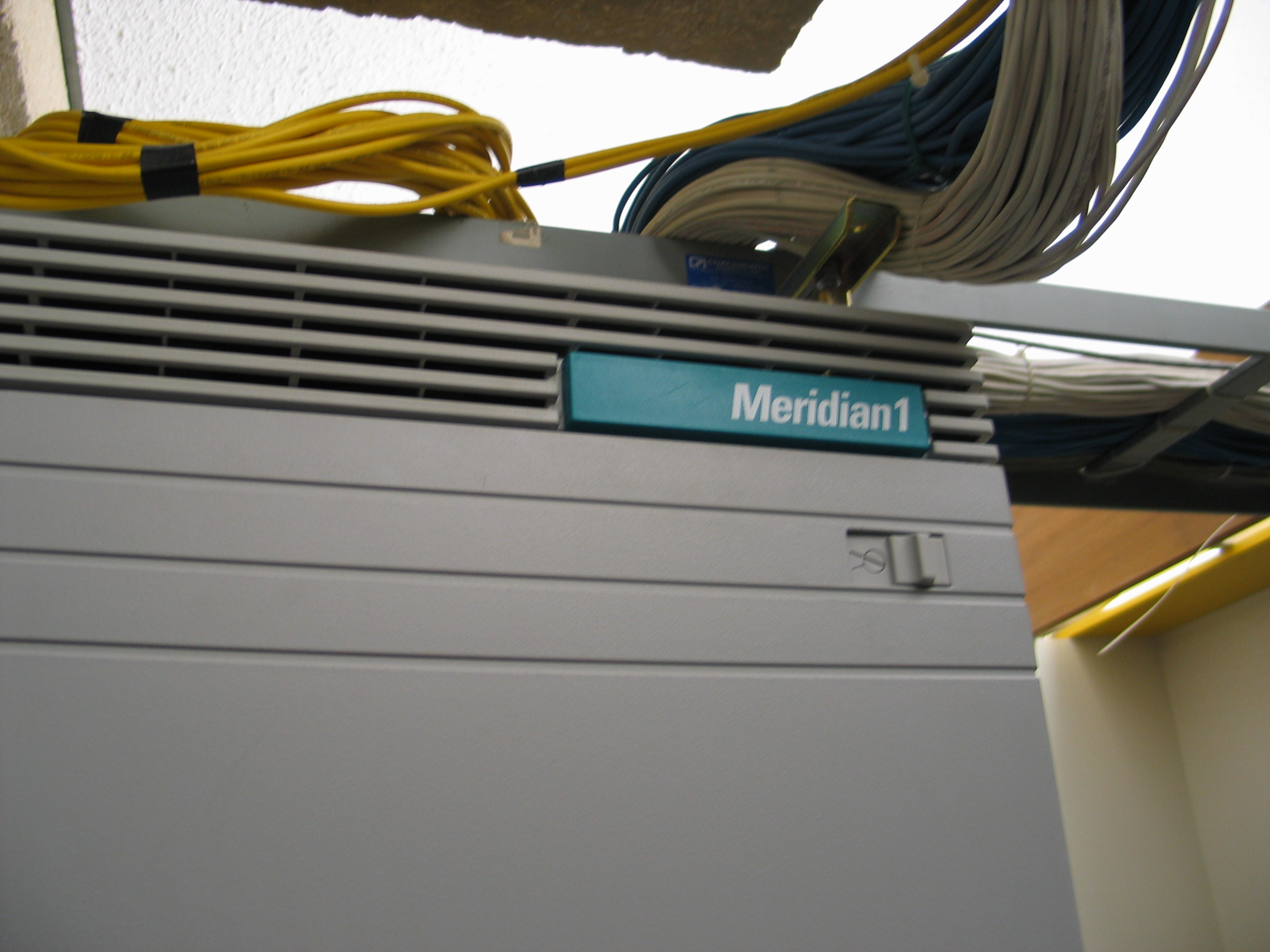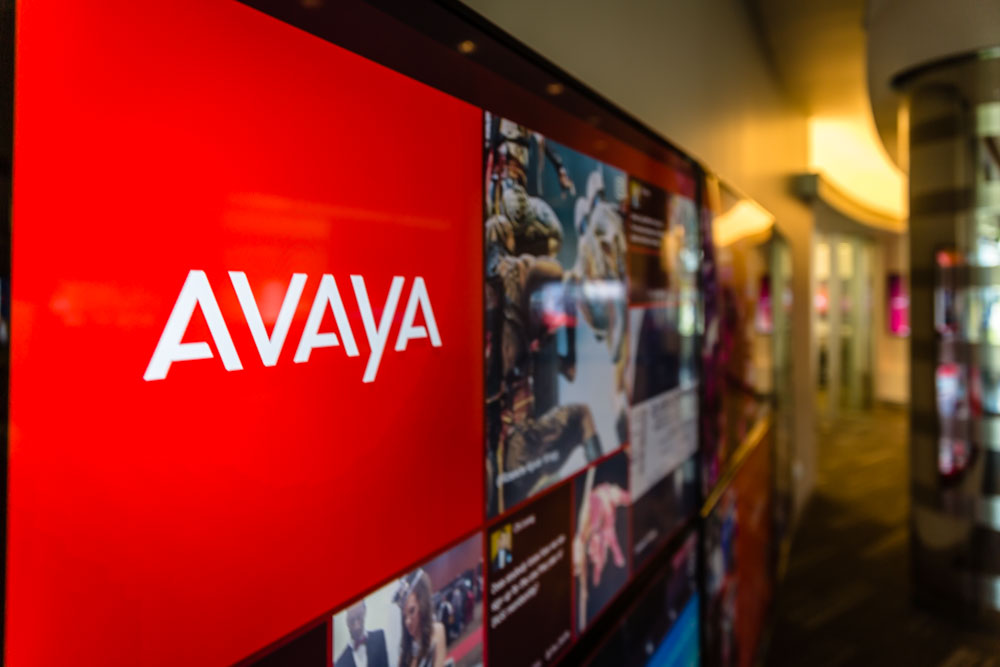|
Meridian Mail
Meridian Mail is one of the early all-digital voicemail systems, running on Meridian1 / SL-1 digital PBX systems from Northern Telecom (later known as Nortel). In the early 1980s Northern Telecom introduced the Norstar. The Norstar was the first all-digital system suitable for small-sized offices (up to 192 lines), and became one of their major product lines. The Norstar is powered by a 16 MHz Motorola 68000, and uses only a fraction of the CPU's power. Nortel executives were interested in finding ways to use that excess power, as long as their customers paid for the privilege. Nortel asked their research arm, Bell Northern Research (BNR), to look for ways to spend those cycles. Meridian Mail was developed as a result. Meridian Mail was discontinued by Nortel, Discontinued< ... [...More Info...] [...Related Items...] OR: [Wikipedia] [Google] [Baidu] |
Voicemail
A voicemail system (also known as voice message or voice bank) is a computer-based system that allows users and subscribers to exchange personal voice messages; to select and deliver voice information; and to process transactions relating to individuals, organizations, products, and services, using an ordinary phone. The term is also used more broadly to denote any system of conveying a stored telecommunications voice messages, including using an answering machine. Most cell phone services offer voicemail as a basic feature; many corporate private branch exchanges include versatile internal voice-messaging services, and *98 vertical service code subscription is available to most individual and small business landline subscribers (in the US). History The term ''Voicemail'' was coined by Televoice International (later Voicemail International, or VMI) for their introduction of the first US-wide Voicemail service in 1980. Although VMI trademarked the term, it eventually became a ... [...More Info...] [...Related Items...] OR: [Wikipedia] [Google] [Baidu] |
Nortel Meridian
Nortel Meridian is a private branch exchange telephone switching system. It provides advanced voice features, data connectivity, LAN communications, computer telephony integration (CTI), and information services for communication applications ranging from 60 to 80,000 lines. History Exploratory development on digital technology, common for the SL-1 (PBX) and the DMS (public switch) product lines, began in 1969 at Northern Telecom, while R&D activities related to the SL-1 started in 1971. SL stands for Stored Logic."L'empire Invisible" by Jean-Guy Rens, History of telecommunications in Canada, 1956-Today The original products were developed in a Bell-Northern Research developed proprietary toolset and language, similar to Pascal called Protel, and ran without a specific operating system. In the 1990s it was evolved onto VxWorks, a commercial real time embedded operating system, at which time the model numbers were evolved to add the letter C to the end of the option numbers. I ... [...More Info...] [...Related Items...] OR: [Wikipedia] [Google] [Baidu] |
Private Branch Exchange
A business telephone system is a multiline telephone system typically used in business environments, encompassing systems ranging in technology from the key telephone system (KTS) to the private branch exchange (PBX). A business telephone system differs from an installation of several telephones with multiple central office (CO) lines in that the CO lines used are directly controllable in key telephone systems from multiple telephone stations, and that such a system often provides additional features related to call handling. Business telephone systems are often broadly classified into key telephone systems, and private branch exchanges, but many hybrid systems exist. A key telephone system was originally distinguished from a private branch exchange in that it did not require an operator or attendant at the switchboard to establish connections between the central office trunks and stations, or between stations. Technologically, private branch exchanges share lineage with centra ... [...More Info...] [...Related Items...] OR: [Wikipedia] [Google] [Baidu] |
Northern Telecom
Northern may refer to the following: Geography * North, a point in direction * Northern Europe, the northern part or region of Europe * Northern Highland, a region of Wisconsin, United States * Northern Province, Sri Lanka * Northern Range, a range of hills in Trinidad Schools * Northern Collegiate Institute and Vocational School (NCIVS), a school in Sarnia, Canada * Northern Secondary School, Toronto, Canada * Northern Secondary School (Sturgeon Falls), Ontario, Canada * Northern University (other), various institutions * Northern Guilford High School, a public high school in Greensboro, North Carolina Companies * Arriva Rail North, a former train operating company in northern England * Northern Bank, commercial bank in Northern Ireland * Northern Foods, based in Leeds, England * Northern Pictures, an Australian-based television production company * Northern Rail, a former train operating company in northern England * Northern Railway of Canada, a defunct railway in On ... [...More Info...] [...Related Items...] OR: [Wikipedia] [Google] [Baidu] |
Motorola 68000
The Motorola 68000 (sometimes shortened to Motorola 68k or m68k and usually pronounced "sixty-eight-thousand") is a 16/32-bit complex instruction set computer (CISC) microprocessor, introduced in 1979 by Motorola Semiconductor Products Sector. The design implements a 32-bit instruction set, with 32-bit registers and a 16-bit internal data bus. The address bus is 24 bits and does not use memory segmentation, which made it easier to program for. Internally, it uses a 16-bit data arithmetic logic unit (ALU) and two more 16-bit ALUs used mostly for addresses, and has a 16-bit external data bus. For this reason, Motorola termed it a 16/32-bit processor. As one of the first widely available processors with a 32-bit instruction set, and running at relatively high speeds for the era, the 68k was a popular design through the 1980s. It was widely used in a new generation of personal computers with graphical user interfaces, including the Macintosh 128K, Amiga, Atari ST, an ... [...More Info...] [...Related Items...] OR: [Wikipedia] [Google] [Baidu] |
Bell Northern Research
Bell-Northern Research (BNR) was a telecommunications research and development company established In 1971 when Bell Canada and Northern Electric combined their R&D organizations. It was jointly owned by Bell Canada and Northern Telecom. BNR was absorbed into Nortel Networks when that company changed its name from Northern Telecom in the mid-1990s. BNR was based at the Carling Campus in Ottawa, Ontario, Canada, with campuses at locations around the world, including Research Triangle Park, North Carolina; Richardson, Texas; Ann Arbor, Michigan; and Harlow and Maidenhead, United Kingdom. Bell-Northern Research pioneered the development of digital technology, and created the first practical digital PBX, (SL1), and central office ( DMS). Under the direction of then Nortel Chief Officer, John Roth, BNR lost its separate identity in the 1990s, and was folded into the Nortel R&D organization. History For much of its early history, Bell Canada operated as the Canadian division o ... [...More Info...] [...Related Items...] OR: [Wikipedia] [Google] [Baidu] |
Avaya
Avaya Holdings Corp., often shortened to Avaya (), is an American multinational technology company headquartered in Durham, North Carolina, that provides cloud communications and workstream collaboration services. The company's platform includes unified communications (UCaaS), contact center other services. The company provides services to 220,000 customer locations in 190 countries. History In 1995, Lucent Technologies was spun off from AT&T, and Lucent subsequently spun off units of its own in an attempt to restructure its struggling operations. ">/sup> Avaya was then spun off from Lucent as its own company in 2000 (Lucent merged with Alcatel SA in 2006, becoming Alcatel-Lucent, which was purchased in turn by Nokia in 2016). It remained a public company from 2000 to 2007. In October 2007, Avaya was acquired by two private-equity firms, TPG Capital and Silver Lake Partners, for $8.2 billion. On January 19, 2017, Avaya filed for Chapter 11 bankruptcy. On December ... [...More Info...] [...Related Items...] OR: [Wikipedia] [Google] [Baidu] |
Unified Messaging
Unified messaging (or UM) is a business term for the integration of different electronic messaging and communications media (e-mail, SMS, fax, voicemail, video messaging, etc.) technologies into a single interface, accessible from a variety of different devices. While traditional communications systems delivered messages into several different types of stores such as voicemail systems, e-mail servers, and stand-alone fax machines, with Unified Messaging all types of messages are stored in one system. Voicemail messages, for example, can be delivered directly into the user's inbox and played either through a headset or the computer's speaker. This simplifies the user's experience (only one place to check for messages) and can offer new options for workflow such as appending notes or documents to forwarded voicemails. Unified messaging is increasingly accepted in the corporate environment, where it's generally seen as an improvement to business productivity. Unified messaging for p ... [...More Info...] [...Related Items...] OR: [Wikipedia] [Google] [Baidu] |
Lanstar
LANStar (Lanstar) was a 2.56 Mbit/s twisted-pair local area network created by Northern Telecom in the mid '80s. Because NT's PBX systems already owned a building's twisted pair plant (for voice), it made sense to use the same wiring for data as well. LANStar was originally to be a component of NT's PTE (Packet Transport Equipment) product, which was a sort of minicomputer arrangement with dumb (VT220) terminals on the desktop and the CPUs in an intelligent rack (the PTE) in the PBX room (alongside the PBX). The PTE was to have several basic office automation apps: word processing, database, etc. Just as NT was doing Beta testing of the PTE, PCs and PC networking took off, effectively killing the PTE before it completed Beta. Given the investment already sunk into the product, NT attempted to repackage the PTE as a small (dorm-room-refrigerator sized) cabinet (the PTE-S, 'S' for 'small') containing only LANStar controllers and supporting up to 112 nodes. LANStar had cards for th ... [...More Info...] [...Related Items...] OR: [Wikipedia] [Google] [Baidu] |
Nortel
Nortel Networks Corporation (Nortel), formerly Northern Telecom Limited, was a Canadian Multinational corporation, multinational telecommunications and data networking equipment manufacturer headquartered in Ottawa, Ontario, Canada. It was founded in Montreal, Quebec, in 1895 as the Northern Electric and Manufacturing Company. Until an antitrust settlement in 1949, Northern Electric was owned principally by Bell Canada and the Western Electric, Western Electric Company of the Bell System, producing large volumes of telecommunication equipment based on licensed Western Electric designs. At its height, Nortel accounted for more than a third of the total valuation of all companies listed on the Toronto Stock Exchange (TSX), employing 94,500 people worldwide. In 2009, Nortel filed for bankruptcy protection in Canada and the United States, triggering a 79% decline of its corporate stock price. The bankruptcy case was the List of corporate collapses and scandals, largest in Canadian h ... [...More Info...] [...Related Items...] OR: [Wikipedia] [Google] [Baidu] |
Telephone Service Enhanced Features
A telephone is a telecommunications device that permits two or more users to conduct a conversation when they are too far apart to be easily heard directly. A telephone converts sound, typically and most efficiently the human voice, into electronic signals that are transmitted via cables and other communication channels to another telephone which reproduces the sound to the receiving user. The term is derived from el, τῆλε (''tēle'', ''far'') and φωνή (''phōnē'', ''voice''), together meaning ''distant voice''. A common short form of the term is ''phone'', which came into use early in the telephone's history. In 1876, Alexander Graham Bell was the first to be granted a United States patent for a device that produced clearly intelligible replication of the human voice at a second device. This instrument was further developed by many others, and became rapidly indispensable in business, government, and in households. The essential elements of a telephone are a m ... [...More Info...] [...Related Items...] OR: [Wikipedia] [Google] [Baidu] |




.jpg)